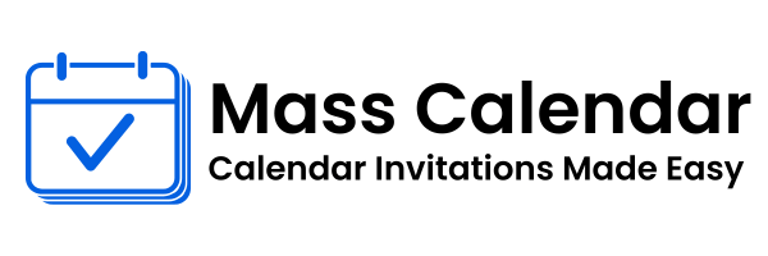The Strategic Art of Scheduling at Scale
The bigger the meeting, the slimmer the margin for error. A single mistake can ricochet across departments, derail timelines, and shred trust faster than any email thread. Well-executed calendar invites transform chaos into predictable cadence, ensuring every contributor shows up prepared and on time.
BLOG
6/25/20253 min read


Why Large-Audience Scheduling Deserves Its Own Playbook
The bigger the meeting, the slimmer the margin for error. A single mistake can ricochet across departments, derail timelines, and shred trust faster than any email thread. Well-executed calendar invites transform chaos into predictable cadence, ensuring every contributor shows up prepared and on time.
Frame the Objective in a Single Sentence
Before opening any app, write down the meeting’s purpose—“Set Q4 release milestones,” for instance. That single line drives guest selection, agenda structure, and follow-up cadence. It also answers the question people silently ask: “Why am I here?”
Collect—and Clean—Your Guest List
Start by consolidating your contacts. Merge information from HR spreadsheets, CRM systems, and event sign-up forms into a single, centralized list—this becomes your one source of truth. Next, standardize the data: fix name casing, remove duplicates, and tag each contact with the correct time zone to reduce errors and bounce-backs. Finally, verify your list by sending a quick test message to catch inactive or invalid email addresses. This step prevents last-minute issues and ensures your invites reach the right people. Clean list hygiene is essential when you're sending calendar invites in bulk—not just one at a time.
Pick a Time That Respects Human Clocks
Time-zone equity. Use a world-clock converter to avoid 6 a.m. or 11 p.m. slots for any core region.
Holiday check. Look up regional festivals, national breaks, and company shutdowns.
Lead time. Offer two weeks’ notice for 50+ guests; four weeks for 500+.
Draft an Invitation People Actually Read
Subject line — “Global Strategy Sync — 15 Oct 2025.”
Opening hook — One sentence explaining the value to attendees.
Agenda snapshot — Three bullets; link to deeper documents rather than attaching giant decks.
Join links — Embed one-click video access plus dial-in backup.
UTC anchor — Listing the base time-zone reduces mental math for international teams.
That structure answers “how do you send a calendar invite that doesn’t get ignored?”—keep the first five seconds crystal-clear.
Platform Fundamentals—No Sales Pitch Needed
Curious about how to send a calendar invite on Gmail? Create the event in Google Calendar, add guests, and hit Send.
Wondering how to send invite on Outlook? Open a new event, paste your guest list, attach the agenda, and press Send—the system takes care of time-zone conversions.
Need to show a teammate how to send a calendar invite in Gmail step by step? Google’s own help article covers the identical flow in screenshots.
Knowing these basics frees you to focus on strategy rather than mechanics.
Scaling Your Send Without Spam
Large webinars or company-wide town halls push infrastructure to the limit:
Batch dispatch. Corporate mail often throttles around 500 recipients per hour—stagger lists to stay compliant.
Privacy guardrails. For external audiences, BCC or personalized messages shield attendee emails.
Daily RSVP checks. Low acceptance from one region may signal a time-zone clash; adjust before it snowballs.
Stay Agile When Plans Shift
Speakers cancel, links change, executives double-book. Keep calm:
Edit the original event—never spawn duplicates.
Flag urgency by prefixing the subject with “UPDATED:” or “TIME CHANGE.”
Send a concise recap—one paragraph explaining what changed and why.
These steps deliver a professional calendar invitation update without overloading inboxes.
Day-Of Execution Tips
Open the virtual room ten minutes early for audio tests.
Assign a tech host so presenters can focus on content.
Record and timestamp the session for teammates who can’t join live.
After the Meeting: Close the Loop
Following up after a meeting is just as important as the meeting itself. Start by distributing the meeting minutes within 24 hours. This helps lock in key decisions and assign clear ownership to action items.
Next, archive all slides, recordings, and related assets. Doing so supports asynchronous review for those who couldn’t attend live and builds a useful record for future reference.
Finally, remember to cancel any unused recurring invites. This simple housekeeping step prevents unnecessary alerts or confusion in the next quarter.
Continuous improvement and post-meeting discipline are the real keys to flawless future calendar invites.
Common Pitfalls—and Swift Fixes
Even small mistakes in sending calendar invites can disrupt attendee engagement—but every issue has a simple solution:
Attachments triggering spam filters? Avoid sending large files directly. Instead, host them in the cloud and share secure links.
Duplicate invites causing confusion? Don’t create a new event for small changes. Just update the existing calendar entry.
Too many reminders irritating your guests? Limit notifications to just two: one 24 hours before the event and another 1 hour before it starts.
Tackling these pitfalls head-on ensures a smoother, more professional invite experience every time.
Conclusion
From kickoff huddles to global briefings, a disciplined process turns scheduling from headache to competitive advantage. Define intent, keep data pristine, respect human clocks, and communicate changes clearly. Master those fundamentals and every invite calendar task—big or small—will land smoothly in inboxes, primed for action.
MassCalendar.in
Send Bulk & Mass Calendar Invites Instantly
CONTACT
Meetings
+44 (0) 203 916 5117
© 2025. All rights reserved.
Help?
